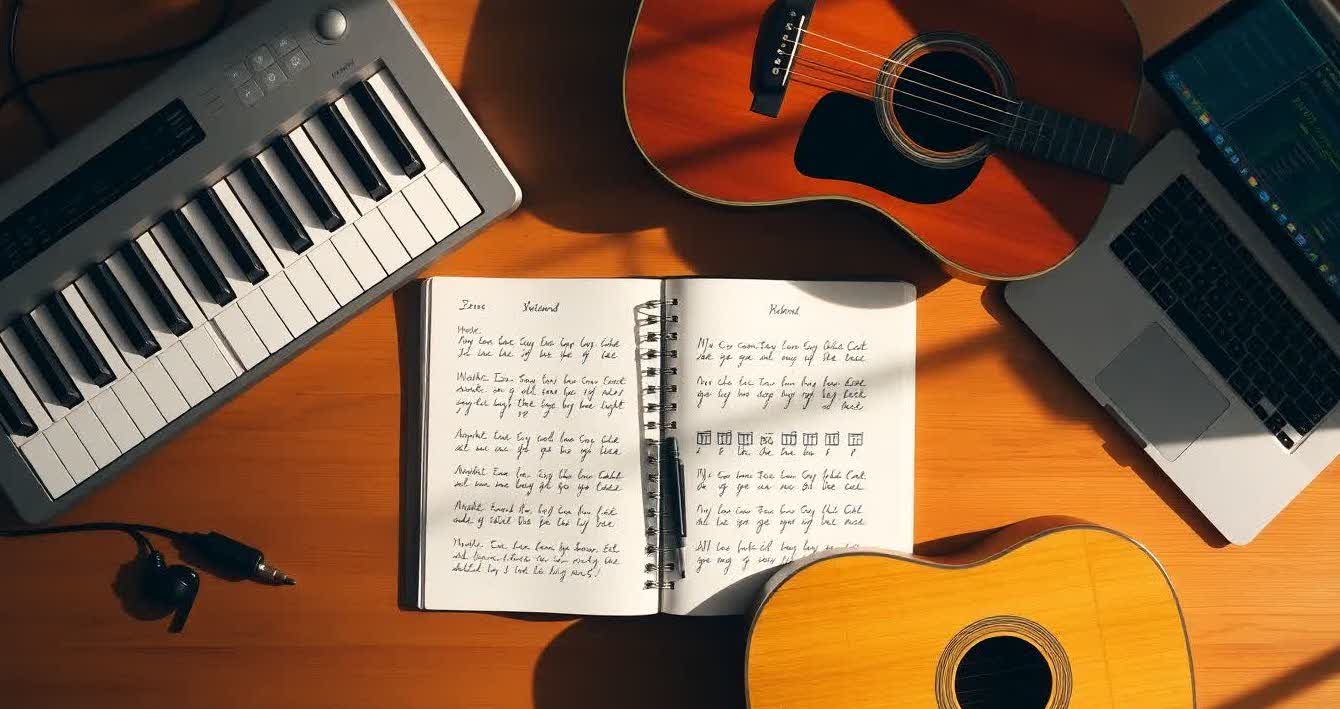June 18, 2025

Chord progressions are the essence of every great song. They shape the emotional landscape, provide the structure for melodies, and influence the overall sound of a track. Whether you're a new songwriter or an experienced musician aiming to refine your harmonic craft, understanding how chord progressions work will give you the tools to craft more dynamic and compelling music.
This guide dives deep into the world of chord progressions, covering their theoretical foundations, popular patterns, and how you can use them to elevate your songwriting process.
At their core, chord progressions are simply a series of chords played in a specific order to create harmony within a piece of music. These progressions provide the framework that supports the melody, sets the tone of the song, and guides the emotional journey of the listener.
If you're a beginner, Download Our Free “Beginner Guitar Chords” eBook for an easy-to-understand guide on how to play common progressions on guitar and apply them to real songs. This will help you get started right away with practical knowledge.
While chord progressions might seem intuitive, they are deeply rooted in music theory, which helps explain why certain combinations of chords sound pleasing to the ear. Key signatures and scale degrees are fundamental to understanding how progressions are formed.
In the key of C major, for instance, the following chords exist:
These are the diatonic chords within the key of C major, and each one serves a different function. For example, the I chord (C major) acts as the home chord, the V chord (G major) creates tension, and the vi chord (A minor) gives a melancholic feel.
Using Roman numerals for chord functions (I, ii, iii, etc.) allows you to easily transpose a progression into different keys. So, if you’re in the key of G major, the same progression (I–V–vi–IV) would become G – D – Em – C, and you can apply it in any key without worrying about the exact notes. This theory also makes it easier to compose, transpose, and experiment with different progressions.
To solidify your understanding of music theory, enroll in our Free 7-Day Piano Challenge, where you'll learn the fundamentals of chord progressions, key signatures, and much more with hands-on practice.
Certain chord progressions have become staples in various genres due to their emotional impact and musical versatility. Here are some of the most famous ones:
Want to experiment with these progressions? Try Our AI Music Generator for Free and generate music in different styles and genres. This tool lets you hear how various progressions sound with different instruments, giving you an intuitive feel for what works.
When it comes to songwriting, the choice of chord progression is key to conveying the mood and emotion of the track. Every progression creates a different emotional effect, and understanding this can help you write with more intention and purpose.
Ask yourself these questions when writing a song:
By asking these questions, you can make more intentional decisions when crafting your progressions. Repetition + variation = great songwriting. Stick with a progression for several verses and use subtle changes or modulations for the chorus to create interest and excitement.
Once you’re comfortable with standard progressions, it’s time to get more adventurous. Modulation (changing the key of a song) and borrowing chords from other modes or scales can add freshness and complexity to your music.
Here are a few ways you can add color to your progressions:
These techniques help your progressions stand out and add unique harmonic shifts that keep the listener’s attention. For inspiration, Download Our Curated Pack of 100 Royalty-Free Tracks, which includes examples of professional compositions that employ modulation and borrowed chords.
If you’re serious about improving your songwriting, the right tools can help you experiment with progressions and record your ideas more effectively. Here are some essential tools for songwriters:
These tools can serve as a launchpad for your creative process, whether you're looking to compose, produce, or simply record your ideas.
Every genre of music has its own signature chord progressions. Here’s a breakdown of what to expect:
If you’re a hip-hop producer, Download Our Exclusive Sample Pack for Hip-Hop Producers to explore chord progressions in that genre and learn how to loop them effectively.
If you're feeling stuck or want some personalized feedback, we’re here to help. Book a Free 15-Minute Music Production Consultation with our experienced team. Get feedback on your progressions, arrangements, and overall song structure to bring your compositions to the next level.
Mastering chord progressions is one of the most powerful tools in your songwriting toolbox. They not only give your songs structure but also help convey emotion, build tension, and create a lasting impact. With a deep understanding of chord theory, practical experimentation, and a willingness to push creative boundaries, you’ll be well on your way to writing memorable and engaging music.
Whether you’re just starting or refining your sound, keep experimenting with new progressions, modulations, and variations. Happy songwriting!
External Links for Additional Resources:
This extended version includes more detailed explanations of each concept, a broader view of songwriting, and additional external resources to support your creative process.
Stay up to date with the newest tips, gear reviews, and step-by-step guides to elevate your photography journey from home and beyond.